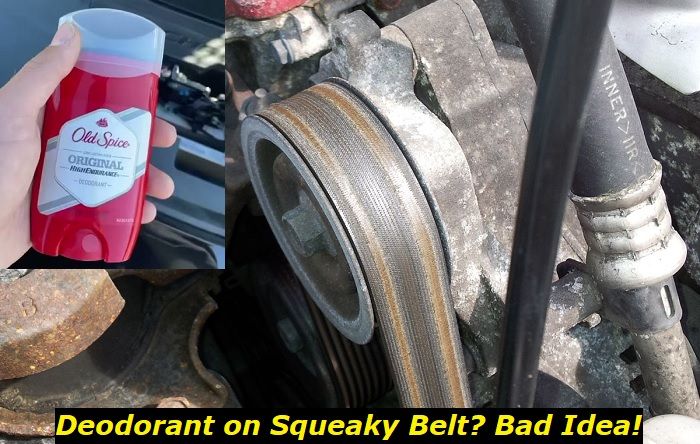Subaru is known for its immediate response and quick acceleration. The fastest Subaru can take 4.3 seconds to accelerate to 60 mph, while an average Subaru will take 7.3 seconds to accelerate to 60 mph. However, the quick response may suddenly turn into intermittent jerks. At times the loss may manifest as power loss throughout the acceleration process. What causes the power loss? How can you fix the acceleration power loss in a Subaru?
Engine power problems highlights
- Level of urgency:Medium
- DIY inspection:Possible but may be complicated
- DIY repair:Sometimes, possible
- Cost of repair:$200 - $650
- Can you drive?In most cases, yes
- Commonreasons:A largelist of reasons, including fuel and air supply, electronics, glitches, but not limited to those.
- Ways to fix:Use code scanner to locate the problem and solve it
.jpg)
What Gives Rise to Loss of Power During Acceleration?
Inadequate fuel or power is a notable cause of power loss when accelerating your Subaru. But it may extend to mechanical issues in your car since fuel and power issues often arise from different engine issues.
Here are some common reasons why your Subaru is losing power during acceleration.
- Feeble Fuel Pump
Your engine will need a blend of air and fuel to power your car. The fuel moves from the car's tank to your engine courtesy of the fuel pump.
The pump will continuously send the fuel to the injector each time your engine needs a new cycle of the fresh air-fuel mixture. Therefore, your acceleration process may be troubled when the pump fails to deliver an undisrupted fuel flow. The interrupted flow causes the engine to skip a few strokes. The skips force your engine to stumble and jerk.
Besides, the acceleration process requires more fuel. Therefore, the acceleration process forces your pump to put more work into pulling and pushing the fuel. A feeble fuel pump will not supply the required fuel to power the acceleration because it can't handle the extra work.
Quick Fixes:
Confirm whether the pump is failing before replacing or fixing it. Use the pressure test to see whether the pump is weakening. If the gauge gives you a weak or non-existent reading, you'll need to replace the fuel pump immediately. Also, check the fuse box. You may be dealing with a dismantled fuse.
You also need to check whether there is enough fuel in your tank. Assess whether you can hear pump noise once you switch on the ignition.
Option 1: Fix the Fuse and Electric Connections
The fuse in the pump often blows out because of an electrical surge in the car's circuit. A visual assessment of the fuse can easily verify whether the fuse broke down due to an electrical surge. However, use a multimeter if you visually verify if it's blown. Replace it if it's blown.
Don't ignore the electrical connections in your fuel pump. Take them off and use the multimeter to check whether they're intact. The multimeter should read 12 volts. Also, check whether the connectors are rusty, have leaks, or have bent sections.
Option 2: Install a New Relay
You also need to assess the fuel pump relay. Disconnect the relay from the car, clean it, and assess it. Start by testing the relay's resistance. Set your multimeter to ohms and hook the relay to the multimeter. A zero or infinite reading on the multimeter means the relay is damaged. If that's the case, install a new relay.
Option 3: Replace the Vacuum Line
You'll see a vacuum line inside your car's fuel pressure regulator. Unfasten the line from the regulator. Check whether you can see any traces of fuel. You'll need to replace the line if it's not completely dry.
Option 4: Replace the Fuel Pump
Subaru makes fuel pumps as a one-term-use engine component. It often lasts 100,000 miles. If you've exceeded 100,000 miles, consider changing it.
- Damaged or Blocked Fuel Filter
Fuel filters block debris from interfering with fuel flow in your engine. Anything that interferes with fuel flow causes power loss during acceleration.
Since modern Subarus ditched the carburetor-fed engine to a fuel injector system, they use a tight nozzle to distribute the fuel to the engine. The nozzle is prone to clogs. The clogs will block the fuel from getting to the engine chamber, causing the engine to underperform.
The underperformance may manifest as intermittent jerks or power loss during acceleration.
Quick Fix:
Perform a visual assessment to see if the filter is dirty. You can also check the fuel pressure.
You'll need to unclog the filter by cleaning it. Use a pressurized cleaner to unblock the fuel filter. The pressure will loosen the dirt and debris in the fuel filter. Tap the filter to clear out all the loosened debris. Let it dry. Repeat the spraying process. Lightly tap the filter to release any remaining dirt. Reinstall the filter after an hour of drying.
You'll need to get a new filter if your car has hit 30,000 miles and you're yet to change it.
- Leaking Valves
Holes and leaks in the engine valves may cause power loss during acceleration. The valves in your motor restrict gas or fuel flow into the combustion chambers.
When a leak occurs in your valves, it causes low compression in the engine. The compression escapes from the holes, causing low pressure in your cylinder. The low pressure, in turn, results in lower power output in your engine.
Quick Fix:
Begin by assessing the engine compression. Remove your fuel pump and injectors to prevent the gas from accessing the cylinders. Attach the compression gauge to your spark plugs and crank the engine. Record your results and compare the compression reading drawn from each cylinder. A reading of 130 psi and above shows that your motor is mechanically healthy.
However, a reading below 100 psi indicates low engine compression. Replace the valves if you see more than a 10% variation between the engine cylinders.
- Defective MAF Sensor
Mass Air Flow (MAF) sensor determines the volume of air flowing into the engine. The sensor will then report the figure to the car's Powertrain Control Module (PCM). The PCM will use this information to determine the quantity of fuel your engine needs to achieve an ideal air-fuel ratio.
Your Subaru will need 12.5+ AFR to accelerate and maintain the acceleration. A faulty MAF will make it impossible for your PCM to determine the amount of fuel your engine needs to accelerate. Excess fuel may remain within the combustion chamber leading to a lean air-fuel ratio. It will cause sudden jerks or hesitations during acceleration.
Quick Fix:
You should also change it after every 6 months. But you need to clean the sensor when you change your oil or clean the air filter.
You'll need to detach your MAF sensor from your car. Don't touch any electrical wires as you remove the sensor. Once disconnected, you can either clean it by placing it in a container or bag that contains rubbing alcohol or spraying a MAF sensor cleaner into the sensor. After cleaning it, dry it for 20 minutes before reinstalling it.
You may have to replace the sensor if it's severely damaged.
- Dirty Air Filter
An air filter prevents dirt and other contaminants from infiltrating your car's engine. It lets clean air flow to your engine. Unfortunately, the filter becomes dirty, minimizing its ability to prevent dirt from accessing the motor.
Once dirty air flows into your motor, it lowers its performance. You may notice that your Subaru not only loses power during acceleration but also manifests a slow acceleration response.
The dirty air will restrict airflow to the combustion chamber resulting in unburned fuel. The unburned fuel may form a soot mask that covers the spark plug, shrinking its ability to deliver enough strokes.
You'll also need to check your exhaust system. A clogged particulate filter or exhaust can cause power loss or slow acceleration.
Quick Fix:
You'll need to change or clean your air filters. A visual inspection will verify if your air filters are clean or blocked. Subaru's air filters are white when new or clean. So, clean your filter if you see a discolored air filter.
Remove the air filter and spray a cleaner all over it. Let it drench for a while before rinsing it off. Shake it gently and let it air dry before reinstalling it. Apply oil onto the entire air filter and reattach it to its housing.
- Faulty Turbocharger
A Turbocharger magnifies your engine's horsepower. Over time, the boost pipe may become loose, giving rise to a severe decline in your engine's performance. Turbochargers are also prone to dirt, soot, and debris. The dirt impacts their performance.
Quick Fix:
Check whether small objects have lodged on the turbines or your compressor. If that's the case, remove the foreign object. Inspect whether your turbo has enough lubrication. Also, check your oil. You'll need to change it if it's contaminated.
Final Thoughts
You may have gotten used to a responsive and quick Subaru. But the car is susceptible to mechanical issues that may cause power loss during acceleration. Low engine compression, a damaged fuel system, a dirty fuel filter, a dirty air filter, a damaged turbo, or a blocked exhaust system may cause power loss.
Other potential defects like a failing cooling system, a malfunctioning oxygen sensor, camshaft positioning issues, or problems with the ignition coil can also cause power loss when accelerating. Take your car to a trusted mechanic shop for a proper diagnosis.
About the authors
The CarAraC research team is composed of seasoned auto mechanics and automotive industry professionals, including individuals with advanced degrees and certifications in their field. Our team members boast prestigious credentials, reflecting their extensive knowledge and skills. These qualifications include: IMI: Institute of the Motor Industry, ASE-Certified Master Automobile Technicians; Coventry University, Graduate of MA in Automotive Journalism; Politecnico di Torino, Italy, MS Automotive Engineering; Ss. Cyril and Methodius University in Skopje, Mechanical University in Skopje; TOC Automotive College; DHA Suffa University, Department of Mechanical Engineering






Add comment